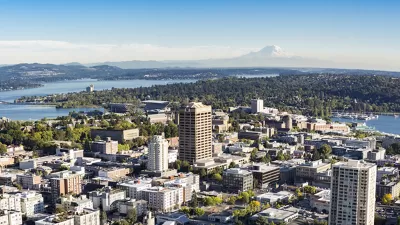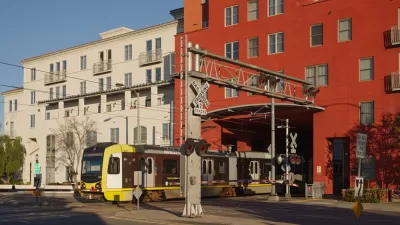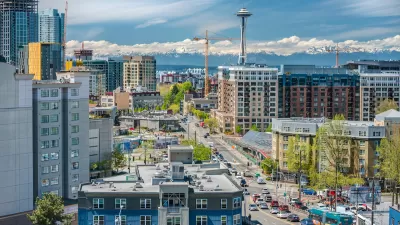Members of the Sierra Club and the Young Democrats of University of Washington come together to advocate more dense zoning in one of Seattle's most transit accessible neighborhoods.

The city of Seattle will be soon decide whether or not to upzone the U district. In an editorial in The Stranger, Jesse Piedfort and Noah An of the Sierra Club and the Young Democrats of University of Washington, respectively argue that the zoning change is sorely needed. "Seattle’s Office of Sustainability and Environment reported that the city is not on pace to meet its climate goals for the year 2030," they point out. Saying that the zoning change is a prime opportunity to address the issue noting, "The U District is an ideal place to build more housing for people. The neighborhood already has excellent bus connections and will, by 2021, have two new light-rail stations."
While the two organizations represent different people with a diverse set of interests, Piedfort and An emphasize their agreement on this issue. "The Sierra Club and the Young Democrats at the University of Washington agree that climate issues and affordability are closely linked—and so are their solutions. We need more housing, and for reasons of environmental and economic justice, that housing ought to be as close to transit as possible." They continue by suggesting that the advantages of the development aren't limited to environmental concerns, "At a time when we are dealing with a housing crisis, anything less than the full rezone recommendation is insufficient to address the great need for housing in one of Seattle’s most dynamic neighborhoods."
FULL STORY: Guest Editorial: Now More than Ever, Seattle Must Welcome Upzones

Maui's Vacation Rental Debate Turns Ugly
Verbal attacks, misinformation campaigns and fistfights plague a high-stakes debate to convert thousands of vacation rentals into long-term housing.

Planetizen Federal Action Tracker
A weekly monitor of how Trump’s orders and actions are impacting planners and planning in America.

San Francisco Suspends Traffic Calming Amidst Record Deaths
Citing “a challenging fiscal landscape,” the city will cease the program on the heels of 42 traffic deaths, including 24 pedestrians.

Defunct Pittsburgh Power Plant to Become Residential Tower
A decommissioned steam heat plant will be redeveloped into almost 100 affordable housing units.

Trump Prompts Restructuring of Transportation Research Board in “Unprecedented Overreach”
The TRB has eliminated more than half of its committees including those focused on climate, equity, and cities.

Amtrak Rolls Out New Orleans to Alabama “Mardi Gras” Train
The new service will operate morning and evening departures between Mobile and New Orleans.
Urban Design for Planners 1: Software Tools
This six-course series explores essential urban design concepts using open source software and equips planners with the tools they need to participate fully in the urban design process.
Planning for Universal Design
Learn the tools for implementing Universal Design in planning regulations.
Heyer Gruel & Associates PA
JM Goldson LLC
Custer County Colorado
City of Camden Redevelopment Agency
City of Astoria
Transportation Research & Education Center (TREC) at Portland State University
Jefferson Parish Government
Camden Redevelopment Agency
City of Claremont





























